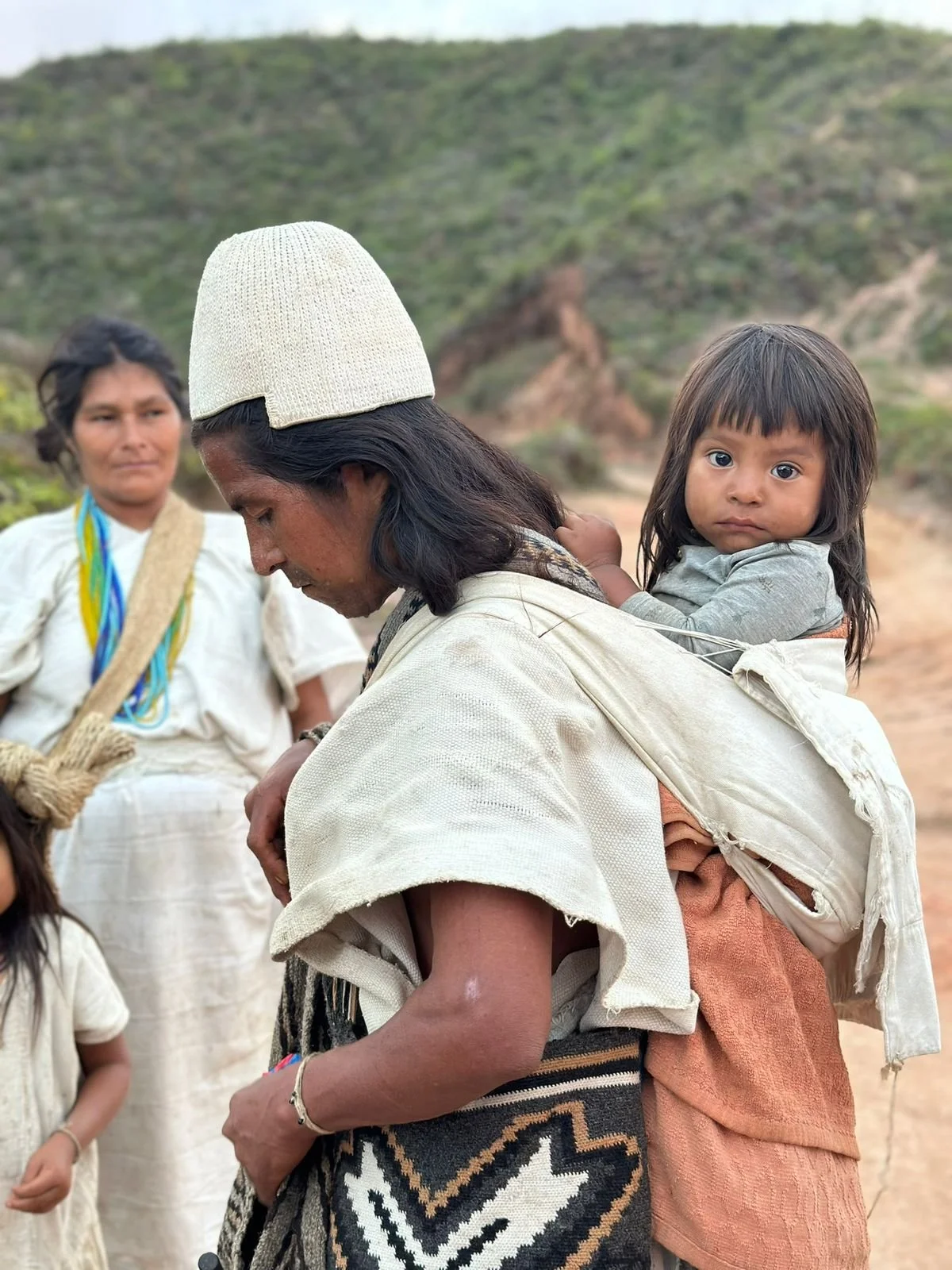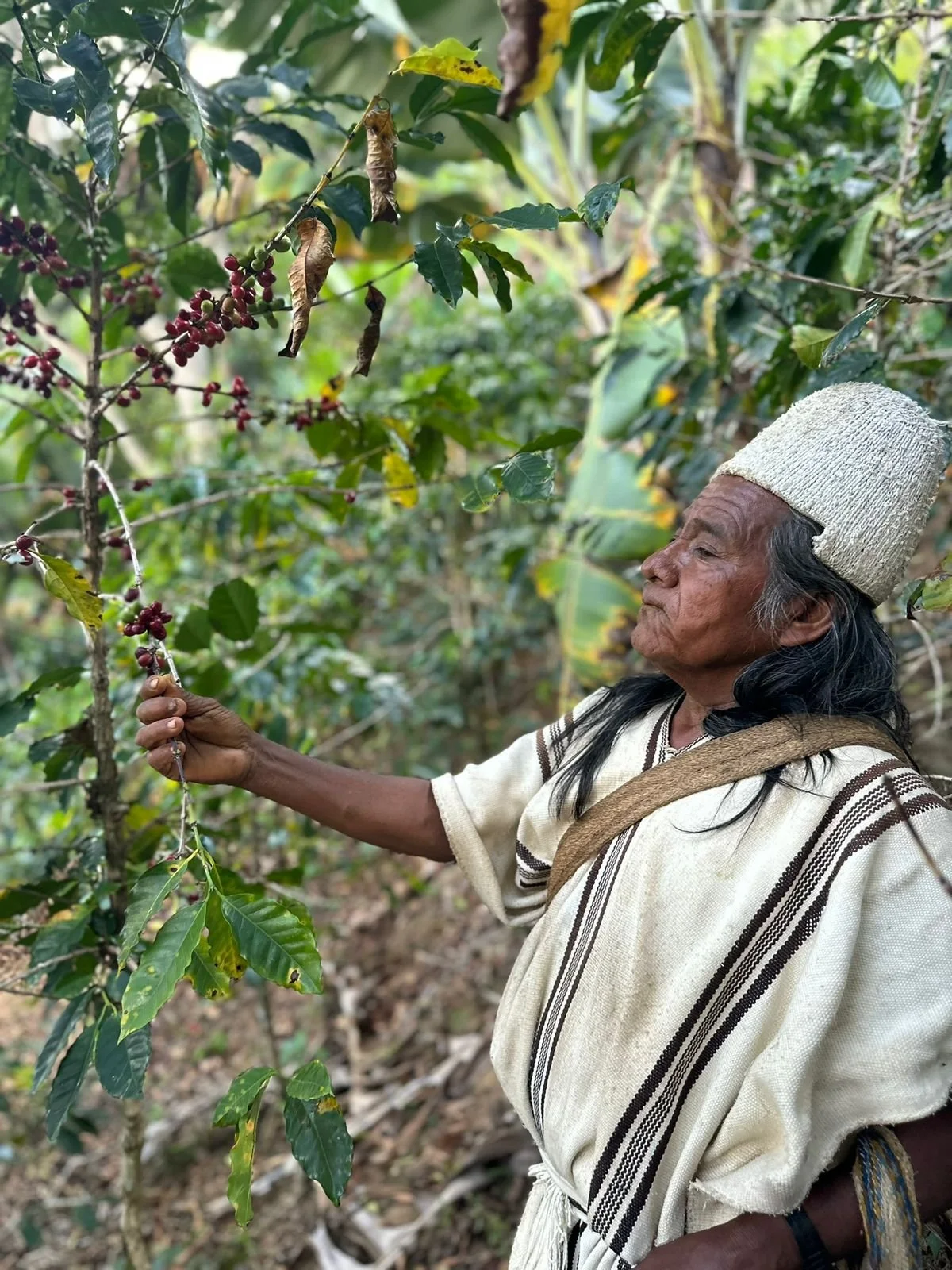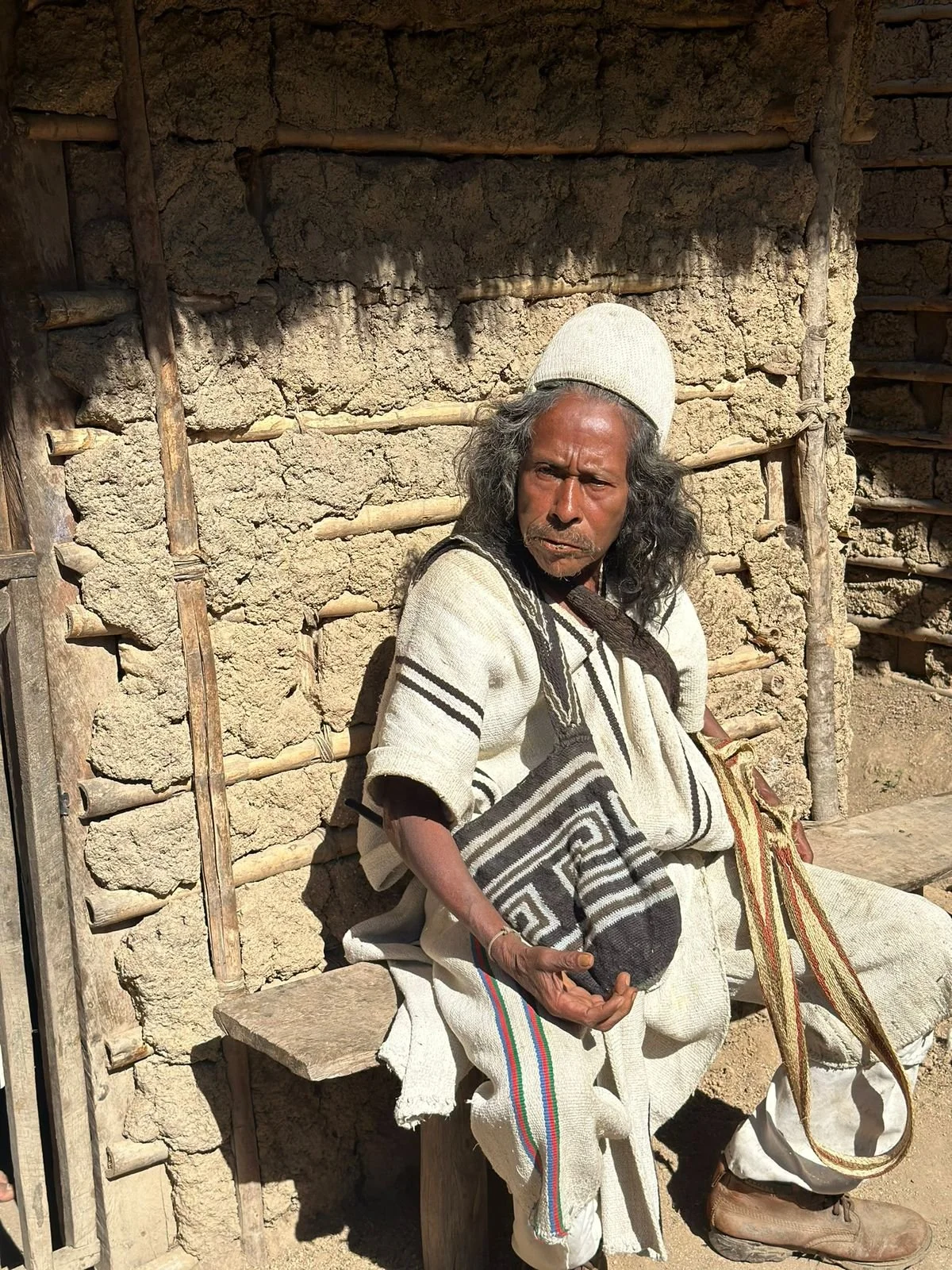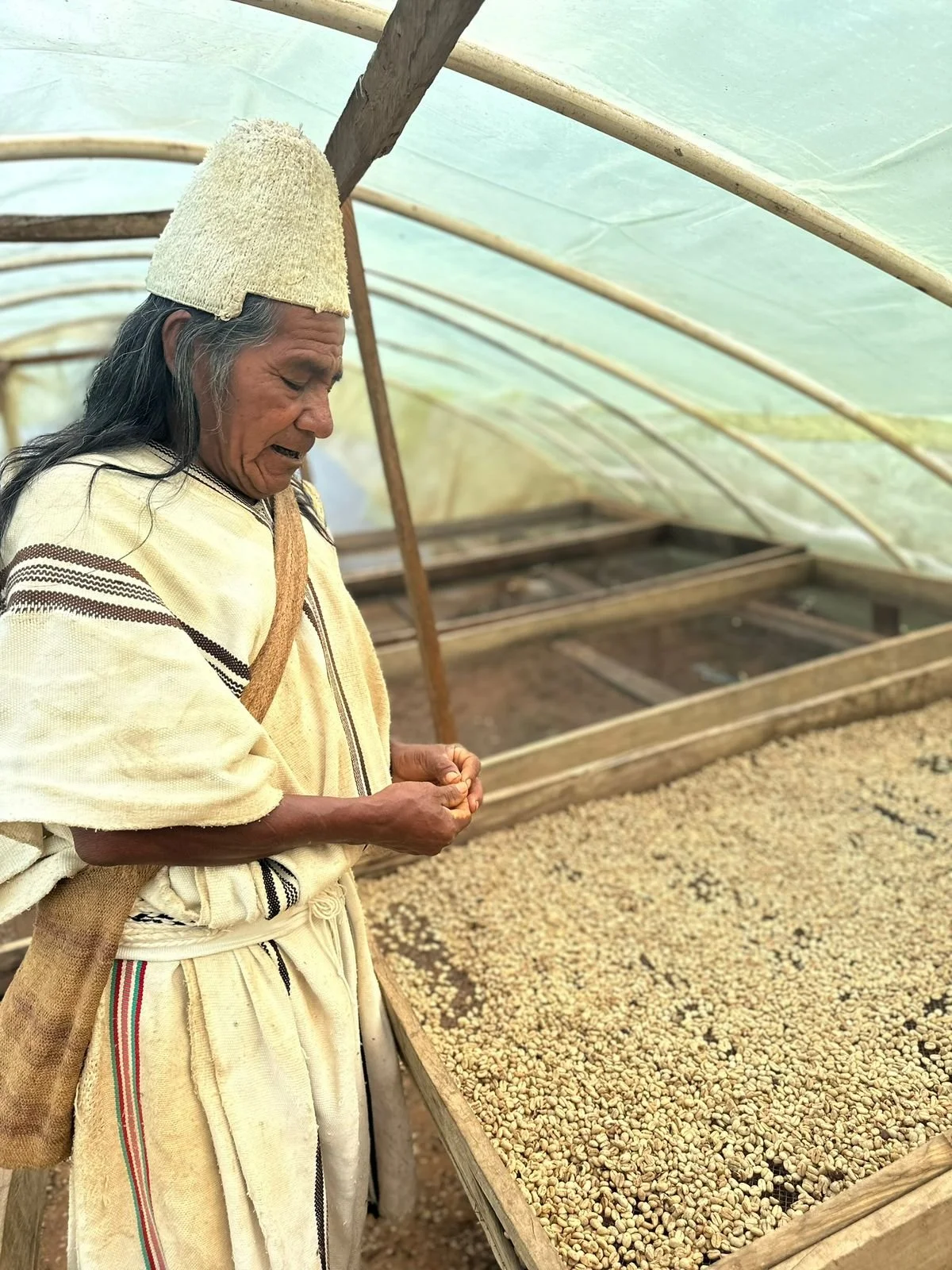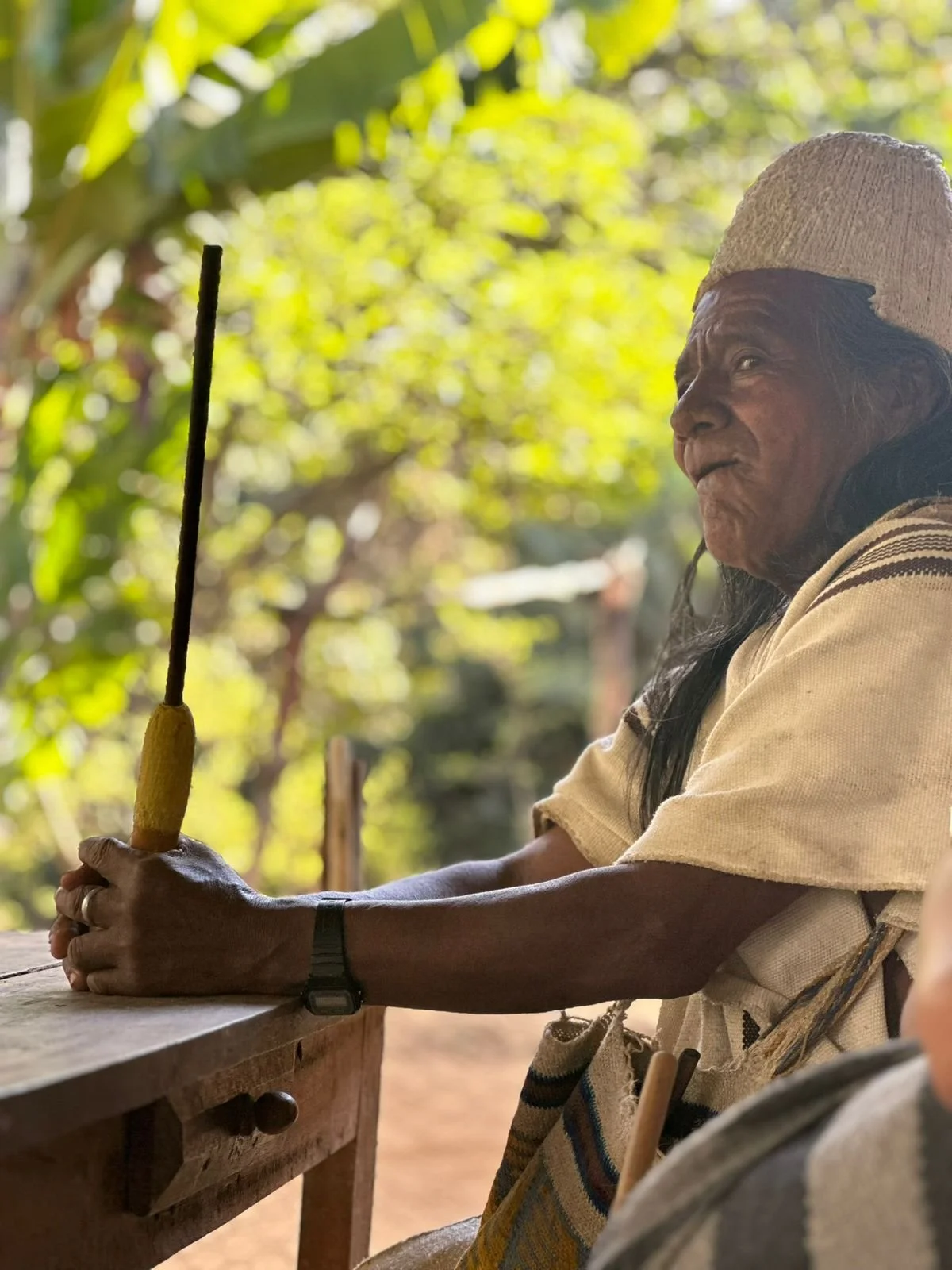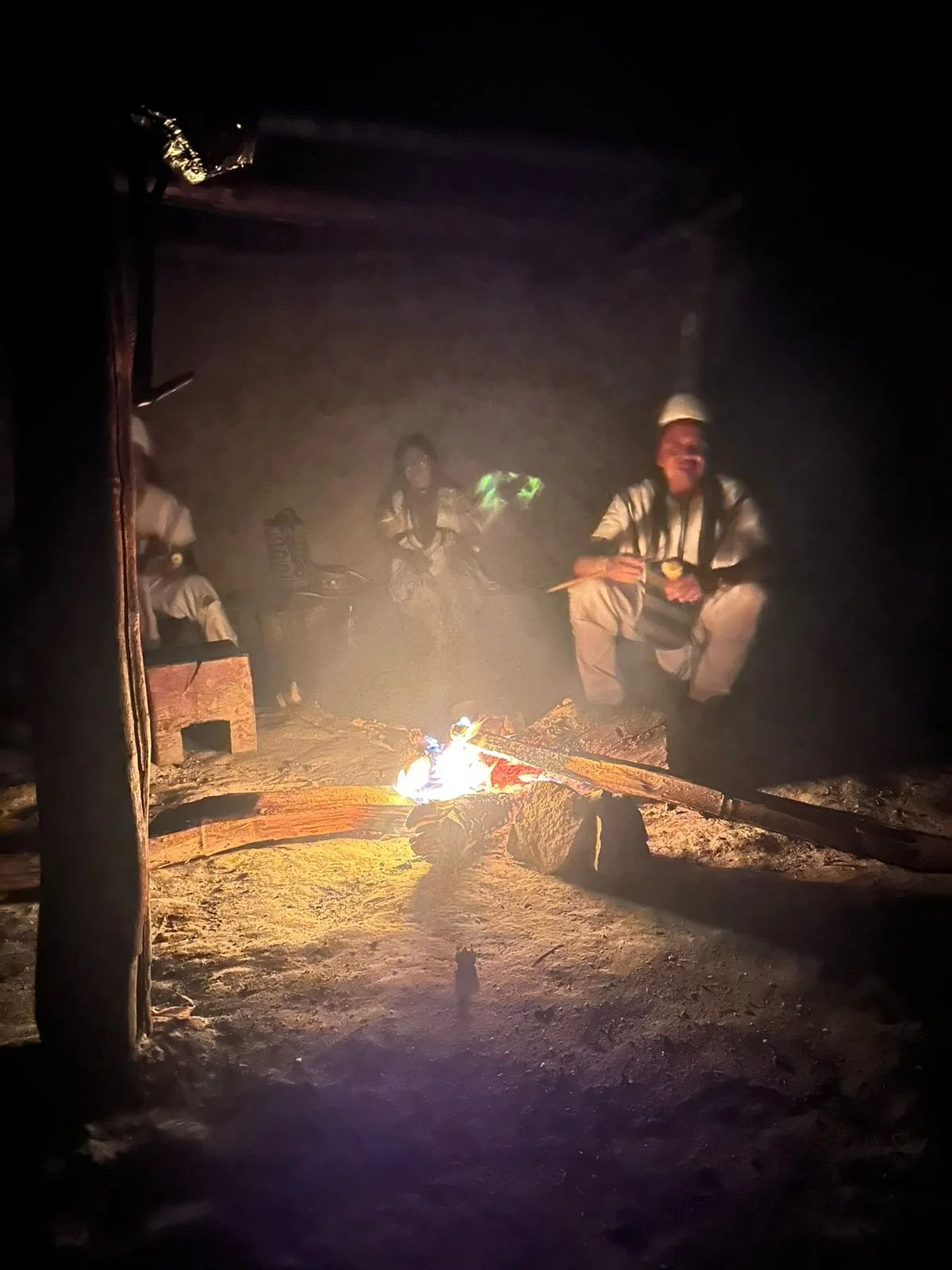SANTA MARTA SMALLHOLDER REGIONAL
SANTA MARTA SMALLHOLDER REGIONAL
Producers: Arhuaco, Kogi, Wiwa, and Kankuamo Smallholder Producers
Farm: Various Smallholder Producer Farms
Bag Size: 70 Kg Grainpro
Region: Santa Marta
Altitude: 1,600 - 1,800 MSAL
Variety: Caturra, Castillo, Variedad Colombia, Tabi
Process: Washed
Notes & INFORMATION
Located on Colombia’s northern Caribbean coast, the Sierra Nevada de Santa Marta rises abruptly to snow-capped peaks at 5,700 meters above sea level, making it the world’s highest coastal mountain range. Coffee production here takes place between 900 and 1,800 meters, where a unique combination of altitude, humidity from the sea, volcanic soils, and sharp temperature swings creates a microclimate perfectly suited for Arabica cultivation.
The region is characterized by deep, fertile soils, abundant natural springs, and dense shade canopies that protect the coffee trees and foster biodiversity. Coffees are typically handpicked and fully washed, with sun-drying carried out on raised beds or patios, depending on the farm infrastructure. Most farms are smallholder operations, many of them belonging to Indigenous communities such as the Arhuaco, Kogi, Wiwa, and Kankuamo, who integrate traditional ecological knowledge into their farming practices. Their approach emphasizes harmony with nature: shade-grown systems, organic fertilizers, and minimal chemical inputs are standard across the region. Coffees from the Sierra Nevada de Santa Marta are recognized under Protected Designation of Origin (Denominación de Origen Sierra Nevada), a mark that guarantees its geographic authenticity and distinctive quality. This recognition highlights the region as one of Colombia’s most emblematic coffee origins, combining high cup quality with cultural and environmental sustainability.
COFFEE CHAIN OF CUSTODY & PROCESSING
Smaller producers in this industry have often faced uphill challenges due to their smaller farms being located in remote areas, their production being too small to sell their coffee on their own, or the lack of proper infrastructure around them, making it very difficult to break into higher-quality markets on their own. Smallholders also typically sell to local intermediaries or “coyotes”, who may offer prices below the market rate because their market access to buyers is minimal. Smallholder coffee farmers in Santa Marta can face systemic disadvantages tied to market access, infrastructure, financial insecurity, and power dynamics. These challenges make it hard to compete even while producing some of the absolute best coffees in the world. The lack of direct access to exporters or specialty buyers, means farmers are forced to accept whatever price is available that day, often without transparency or bargaining power.
Why is this coffee different? The producers who participated in the creation of this lot worked exclusively with our export partners in Colombia, Carcafe. Carcafe plays a pivotal role in supporting smallholder coffee producers across Colombia, but especially in Santa Marta. Through technical assistance, sustainability initiatives, and direct market access with their collection centers in Santa Marta, Carcafe aims to improve the livelihoods of smallholder farmers by providing them access to international specialty markets willing to pay a fair price for these types of coffees.
Each family in the area does the majority of their own harvesting and usually with the help of their family & neighbors.
Coffee collection
Once the parchment is dry, it is ready to be sold or delivered to the Carcafe Santa Marta collection center. Carcafe’s field teams provide producer assistance programs that support quality and consistency across farms, offering training on best practices for fermentation, drying, and storage. Once parchment is delivered to the Carcafe station in Santa Marta, it undergoes quality control to ensure compliance with export standards. If quality meets the moisture and cup profile requirements, they gain access to a differentiated premium price that is over the local market price, which directly enhances the price paid for their coffee. Thus, not only does the program have a direct impact on their income and their quality of life, but it also provides the opportunity to improve and maintain the infrastructure of their farms and production. Following delivery, it is physically separated and transported to the milling and warehousing facilities. From this point forward, Carcafe is in charge of milling, storing, selling and delivering the coffee to clients around the globe.
Technical Information - Processing
Since the drying process is carried out at each individual farm, the drying times used for post harvest drying varies from 10 to 14 days on average and generally depends on the micro climates and drying infrastructure at each farm. Some farms may rely on sun patios to dry their coffees where others might utilize solar drying on raised beds. While most traditional smallholders do not routinely measure Brix at harvest, larger cooperatives and associations supporting the region have begun to encourage Brix readings to optimize cherry selection. Ripe cherries generally measure between 18–22° Brix, a range considered ideal for the balance of sugars and acids in washed processing.

